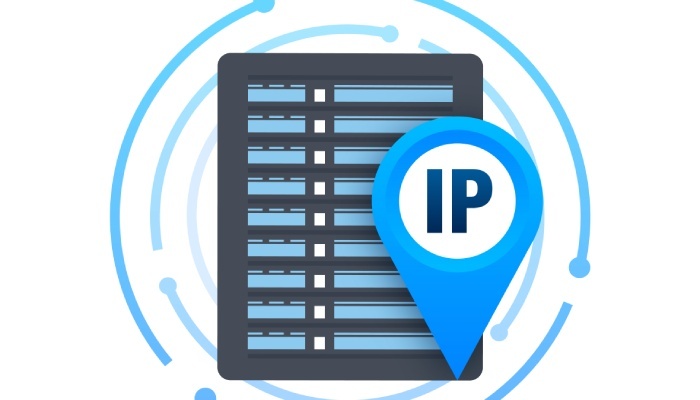What is AAAA DNS? Understanding IPv6 Records and Their Importance
In the ever-evolving landscape of the internet, the way we connect and communicate is rapidly changing. As more devices come online—from smart thermostats to virtual reality headsets—understanding how to effectively manage these connections becomes crucial. This is where AAAA DNS records step in, acting like a GPS for navigating the intricate pathways of IPv6 addresses.
Unlike their IPv4 predecessors, these records unlock a vast universe of unique addresses, making sure every device can find its way home. Join us as we dive deeper into what AAAA DNS is all about, why it’s essential for modern web interactions, and how it facilitates a smoother digital experience for everyone.
A AAAA DNS record is an entry that maps a domain name to an IPv6 address, similar to how an A record connects a domain to an IPv4 address. This type of record facilitates the transition from IPv4 to IPv6, enabling a greater number of unique IP addresses as the demand for internet connectivity continues to grow.
Overview of DNS and IP Addresses
At its core, the Domain Name System (DNS) is an intricate yet user-friendly structure that plays a pivotal role in how we navigate the internet. Just imagine trying to recall and type out a series of numbers every time you wanted to visit a website—what a hassle that would be! Instead, DNS allows us to use memorable domain names like www.example.com, which are then translated into corresponding IP addresses that computers can understand. Think of it as the bridge between human intuition and machine logic, ensuring our online experiences are seamless.
IPv4 and IPv6
Traditionally, we’ve primarily relied on IPv4 addresses—the familiar 32-bit numeric labels, such as 192.0.2.1. These were sufficient during the early days of the internet when there were far fewer connected devices. However, as you’ve likely noticed, the number of devices using the internet has exploded: smartphones, smart TVs, even home appliances are getting their own connections. Consequently, we’ve nearly run out of IPv4 addresses—imagine trying to find parking in a crowded city with no available spots!
To remedy this shortage, IPv6 was introduced, characterized by its 128-bit addresses like 2400:cb00:2049:1::a29f:1804. This expanded address capacity is not just an incremental increase; it’s more like moving from a cozy suburban neighborhood to an entire metropolis! With a theoretical limit of 340 undecillion unique IP addresses, IPv6 offers an almost limitless space for future growth and connectivity.

This transition from IPv4 to IPv6 is critical—not only does it ensure that new devices can connect without issues, but it also supports enhanced security features and overall efficiency in data routing.
As the demand for internet addresses increases, understanding both AAAA records for IPv6 and A records for IPv4 becomes essential for anyone managing websites or networks today. With around 30% of internet users accessing content via IPv6, it’s clear that adopting AAAA records isn’t just recommended; it’s becoming essential.
As we continue exploring this landscape of digital connectivity, we’ll look into how these records play a crucial role in ensuring network stability during the transition from one system to another.
The Purpose of AAAA Records
At their core, AAAA records, or quad-A records, serve the fundamental role of mapping domain names to their corresponding IPv6 addresses. Unlike their predecessors, the A records that only support IPv4, AAAA records enable a seamless transition into the new age of online connectivity where more devices than ever can be reached thanks to the significantly larger address space offered by IPv6.
With the world at large shifting towards these newer protocols, understanding how AAAA records work becomes increasingly vital for anyone managing a website or online service.
Imagine you’re trying to enter a concert hall that has just switched its entrance from one side of the street to another. If you still have the old directions ingrained in your head, you’ll find yourself lost and confused. This is precisely what could happen without proper implementation of AAAA records for your web addresses.
When someone types in a URL associated with an IPv6 friendly site, the DNS will retrieve the correct IPv6 address linked through these records, ensuring a straightforward path toward content that might otherwise be difficult to access.
This highlights how AAAA records do not merely replace A records but enrich your digital experience by facilitating communication in our increasingly interconnected world. As adoption rates rise—nearly 30% of internet users were accessing services via IPv6 as of 2023—these records become pivotal in maintaining reliable access to online resources.
Moreover, configuring AAAA records adds redundancy in server management. You can set multiple AAAA records for a single domain name, allowing traffic to be distributed across various servers. This ensures that even if one server goes down, others can pick up the slack and keep your site running smoothly. Consequently, it’s not just about adaptation; it’s also about enhancing reliability and user experience.
Understanding the role and benefits of these records lays the groundwork for exploring why transitioning to IPv6 is becoming increasingly significant in today’s digital landscape.
Significance of IPv6 Transition
The move from IPv4 to IPv6 is a vital step in ensuring that our digital infrastructure can accommodate the exploding number of devices connected to the internet. With an astounding 340 undecillion possible addresses in IPv6 compared to about 4.3 billion in IPv4, the new standard opens up a world of possibilities for connectivity and communication. This transition creates a foundation that supports efficiency and security in our increasingly interconnected lives.

One of the most compelling reasons for this shift is the need for autoconfiguration capabilities. In simpler terms, IPv6 allows devices to automatically assign themselves an address when they connect to a network, eliminating the manual input often required with IPv4. Picture your smart home: every new gadget you add needs to be connected seamlessly without significant fuss or configuration. This capability proves invaluable as we expand into a universe where everything from refrigerators to vehicles may require internet access.
Additionally, with nearly 30% of internet users already using IPv6 as of 2023, it’s clear that this transition is underway and will only accelerate. Internet service providers, organizations, and domain owners need to adapt their DNS configurations accordingly—transitioning existing A records to AAAA records—to keep pace with these changes.
As global internet usage continues its upward trajectory, projected total device connections are estimated to reach 75 billion by 2025. Adopting IPv6 isn’t just important; it’s essential for survival in today’s digital landscape. Those organizations failing to adapt could face serious accessibility issues as the number of available IPv4 addresses dwindles.
Furthermore, transitioning to IPv6 enhances routing efficiency. The design simplifies packet processing by reducing the size of routing tables and allowing for more efficient data transmission across networks. This isn’t just a benefit for tech-savvy entities; improved routing translates into faster loading times and better user experiences across all types of online services.
As we explore these dynamics, it becomes evident that understanding how AAAA records function is critical in navigating this transformation within our digital ecosystem.
Structure and Function of AAAA Records
At its core, an AAAA record serves as a bridge between human-friendly domain names and the technically intricate IPv6 addresses. The fundamental format is quite simple: it consists of a host name, the class of the record (usually “IN” for Internet), followed by the type (“AAAA”), and finally, the actual IPv6 address.
To illustrate this in practice, consider configuring an AAAA record for the domain “example.com.” In a DNS zone file, this would look something like:
example.com. IN AAAA 2400:cb00:2049:1::a29f:1804

In this example, “IN” indicates that the record pertains to the Internet, while “AAAA” specifies that it’s pointing to an IPv6 address. The following segment represents the IPv6 address itself, structured into eight groups separated by colons. This layout reflects how IPv6 expands upon the existing limitations of IPv4 addresses. The intricacies of these addresses come from their larger size and ability to provide a greater number of unique addresses.
However, it’s essential to grasp that not all IPv6 addresses are created with uniformity. The potential complexity can trip up both novice and experienced users, which is why adhering to normalization practices according to RFC 5952 becomes crucial. This standard dictates how IPv6 addresses should be formatted—removing unnecessary zeros and simplifying representations without altering functionality. Such consistency helps prevent errors during configuration; no one wants to misplace a colon or jumble hex digits when setting up their domains!
Once you have clarity on the structure, navigating through the process of configuring these records will feel much more manageable. With careful adherence to relevant steps, even those unfamiliar with networking can confidently adjust their domain settings to embrace modern internet protocols.
Setting Up AAAA Records for Your Site
Configuring your AAAA record may seem daunting at first, but it’s actually straightforward, especially when broken down into a series of well-defined steps. You begin by logging into your DNS service provider’s dashboard. This is usually a familiar step—think of it like flipping open a neatly organized book that holds all the details of your website’s identity online.

Once you’re logged in, the next step is to navigate to the DNS Management Section. This area might be labeled under several different titles such as “DNS Settings,” “Zone File Management,” or simply “Manage DNS.” It’s akin to searching for the right chapter in that book where all necessary changes to your domain settings reside. Finding this section might take a moment, but it is crucial to ensure you’re making modifications in the correct place.
Now comes one of the most important steps: adding a new record. Select the option to “Add Record” and then choose AAAA from the dropdown list of record types. Here, you’ll feel like an artist selecting colors from a palette; each choice contributes to the overall picture of your website. Be confident in this selection because you are taking an essential step towards enabling IPv6 functionality for your site.
The following step involves entering specific details related to the new record. You will need to input the host name, which can typically be represented as “@” for your root domain or “www” if you’re setting up a subdomain. Then, you will add your IPv6 address—this is where your site truly connects with the evolving internet architecture. Think of this step as planting a seed in digital ground, ensuring it has the right coordinates to grow effectively.
Finally, after those precise entries have been made, remember to save the changes! However, don’t expect immediate results; allow time for DNS propagation, which typically ranges from a few hours up to 48 hours. It’s like waiting for dough to rise: it takes patience, but once it’s done, the results are satisfying.
Understanding these steps makes setting up AAAA records approachable, yet being aware of common pitfalls can prevent unnecessary complications along the way. As we move forward, recognizing these challenges will empower you with best practices that enhance DNS management efficiency and effectiveness.
Common Challenges and Best Practices
One of the primary challenges that many face is ensuring compatibility between legacy IPv4 systems and newer dual-stack configurations. This can often lead to connectivity issues or limited service reach, particularly when older applications or devices fail to recognize AAAA records.

For instance, if a network isn’t configured to handle both IPv4 and IPv6 traffic, you might experience dropped connections or failures to establish necessary communications.
Integrating IPv6 seamlessly into existing infrastructure can be daunting. It’s crucial to engage in proactive measures: regularly auditing your settings can help identify misconfigurations that could lead to downtime or accessibility problems.
Utilizing tools like dig—a command-line utility for analyzing DNS records—can greatly assist in testing your AAAA records. By running simple queries, you can verify your settings are correct and functioning as expected.
Regular monitoring of DNS queries is another best practice worth emphasizing. This means keeping an eye on incoming requests to catch potential issues early on before they escalate into bigger problems. Discovering discrepancies through monitoring helps maintain a consistent user experience across varying networks.
To enhance email security alongside IPv6 adoption, implementing SPF, DKIM, and DMARC ensures authenticated domain communications, safeguarding your AAAA-enabled domain from spoofing and phishing threats in today’s evolving digital landscape.
Furthermore, maintaining reliable backups of your DNS configuration settings cannot be overstated. In case of data loss or accidental deletions, having a pristine version of your settings allows you to restore functionality without losing valuable time.
Many organizations also encounter knowledge gaps when it comes to IPv6, making education paramount. Network administrators should take initiatives to familiarize themselves with IPv6 protocols and AAAA record management. The more comfortable staff are with these technologies, the less likely connectivity issues will arise.
It’s beneficial to adopt dual-stack configurations even as you implement AAAA records. This method allows you to support both types of addresses simultaneously, providing a seamless transition for users who may not yet have adopted IPv6-capable devices.

Addressing these technical challenges while adhering to best practices sets a strong foundation for what lies ahead in the evolving landscape of internet technology. As we look beyond the current state of networking, there are exciting developments on the horizon worth exploring.
Future Trends in DNS and IPv6
The trajectory of DNS and IPv6 is set to transform our online experiences, making them more robust and interconnected than ever before. With the rise of smart devices, the integration of the Internet of Things (IoT) is becoming a central aspect of how we use technology today. As the demand for unique IP addresses increases, IPv6’s nearly limitless supply becomes invaluable. This expansion ensures that every device, from your refrigerator to your smartwatch, can connect without overwhelming the old IPv4 address system.
Expected Trends
| Trend | Description |
| Increased IoT Integration | IPv6 will support more devices on the network, essential for IoT ecosystems. This means a smoother connection experience for all kinds of gadgets that demand real-time data processing. Imagine your household syncing seamlessly without hiccups or limitations. |
| Enhanced Security Measures | As reliance on DNS grows, so does the focus on security. Protocols like DNSSEC—designed to protect against attacks—will continue evolving in tandem with IPv6. This evolution ensures users enjoy a safer browsing experience while cementing trust in their connections. As cyber threats become more sophisticated, so too must our defenses be refined. |
| Dynamic DNS Improvements | The management of dynamic IP addresses will significantly improve under IPv6. Users can anticipate smoother transitions between networks—say goodbye to frustrating connection drops when switching from Wi-Fi to cellular! |
Each trend points toward a future where internet infrastructure not only remains scalable but also adapts cleverly to our growing digital demands. Both businesses and consumers have critical roles in this transformation—a shift in attitude alongside technical updates is essential for maximizing these advancements.
Although these changes present exciting opportunities, they also highlight challenges that require thoughtful discourse among industry leaders and end-users alike. Keeping pace with technology often invites complexity; thus, ongoing education around these developments will be key to leveraging them effectively. Embracing open forums and communities focused on sharing knowledge can pave the way for smoother transitions as both DNS and IPv6 architecture evolve.
As we look into the horizon where DNS and IPv6 meet greater accessibility, improved performance, and enhanced security measures—what remains vital is everyone involved proactively engaging with these technologies rather than waiting to adapt reactively. Understanding these dynamics today positions us to thrive in tomorrow’s interconnected landscape.

How can I check if my domain has an appropriate AAAA record configured?
To check if your domain has an appropriate AAAA record configured, you can use online DNS lookup tools such as “dig”, “nslookup”, or web-based services like MXToolbox. Simply enter your domain name and specify the AAAA query type to see if it resolves to an IPv6 address. Statistics show that over 30% of websites now support IPv6, making it critical for compatibility and future-proofing your online presence.
How does an AAAA record differ from an A record in terms of functionality?
An AAAA record differs from an A record primarily in the type of IP address it resolves; while an A record maps a domain name to an IPv4 address (32-bit), an AAAA record maps it to an IPv6 address (128-bit). This distinction is crucial as IPv6 can accommodate a vastly larger address space, addressing the exhaustion of IPv4, which has about 4.3 billion unique addresses. As of 2025, the adoption of IPv6 has surpassed 40% globally, reflecting its importance in enabling the continued growth of internet-connected devices and services.
Why is IPv6 important for the future of internet connectivity?
IPv6 is crucial for the future of internet connectivity as it significantly expands the address space, accommodating the growing number of devices connected to the Internet. With over 30 billion devices expected to be online by 2025, traditional IPv4 addresses are running out; IPv6 provides approximately 340 undecillion (3.4 × 10²⁸) unique addresses. This not only ensures that every device can have a unique identifier but also enables improved security features and efficient routing, essential for the burgeoning Internet of Things (IoT) and seamless global connectivity.

What challenges might arise when transitioning from an A record to using an AAAA record?
Transitioning from an A record to an AAAA record can present several challenges, notably including compatibility issues with legacy systems and applications that may not support IPv6. As of recent data, approximately 30% of internet traffic still relies on IPv4, which means a significant portion of users might experience connectivity problems if AAAA records are implemented without proper IPv4 fallback. Additionally, network devices and firewalls may require configuration updates to handle IPv6 traffic correctly, leading to potential downtime or misconfigurations during the transition period.
What are common scenarios where implementing an AAAA record is necessary?
Implementing an AAAA record is essential in scenarios where a website or service needs to be accessible via IPv6, which is increasingly critical as the global adoption of IPv6 continues to rise. For instance, with an estimated 30% of internet users accessing content over IPv6 by 2025, failing to implement an AAAA record could lead to accessibility issues for these users. Additionally, with many ISPs transitioning to IPv6 due to IPv4 address exhaustion, businesses seeking to maintain robust online presence must ensure they support both IPv4 and IPv6 through proper DNS configuration.







